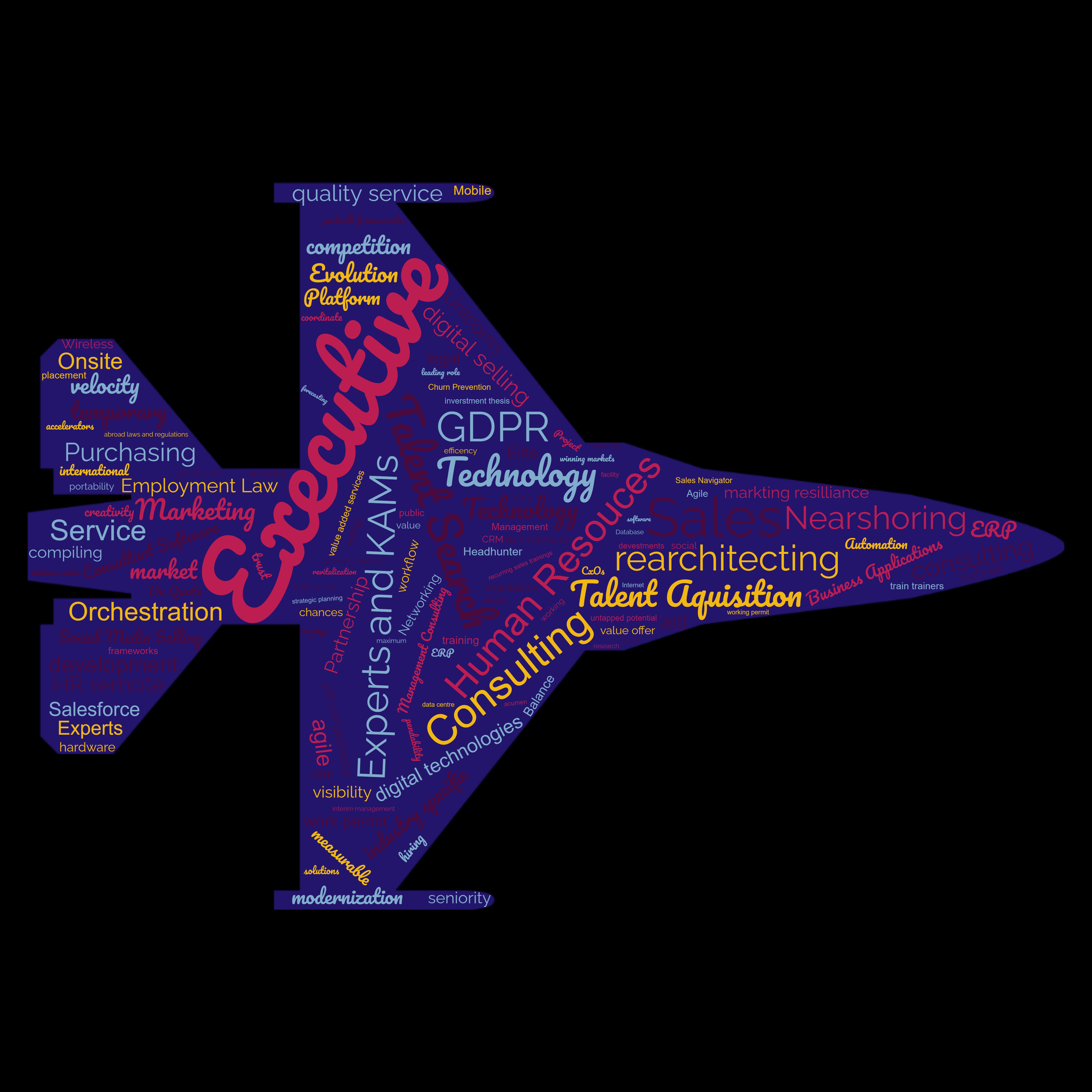Artificial intelligence can support companies in many areas and make the daily work of employees more efficient. Once the decision has been made to use AI services, it is essential to choose the right AI services. Our tips will show you whether an in-house development or a ready-made solution is right for you.To all one thing is the same: The 'how to' in "Ethical Decision Patterns for AI-Controlled Robots in Non-Military Contexts" Abstract This view examines the ethical decision patterns of AI-controlled robots in non-military contexts and offers solutions for ethically responsible programming. Issues discussed include the involvement of society in establishing ethical guidelines, regular review and adjustment of ethical parameters, and control of robot autonomy in ethically sensitive situations. Furthermore, mechanisms for obligating manufacturers to consider ethical principles and ensuring transparency in their technologies are discussed. The integration of ethics into the development of AI robots is seen as crucial to establishing ethical standards in the AI industry and building public trust. The ethical challenges in the application of AI-controlled robots are diverse and require careful examination. This paper considers the ethical decision patterns that may arise when using AI robots in non-military contexts. While the ethical issues behind the use of robots for non-peaceful purposes should not be ignored, we focus here on decision-making processes in emergency situations where autonomous robots must make operational decisions. Key Questions today are: To illuminate and appropriately analyze the ethical dilemma in this context, the following questions should be addressed: How many courses of action are available, and what are they? What different approaches to action are available to an AI-controlled robot in emergency situations? What factors influence the diversity of courses of action? What action patterns must be predefined for the robot as selectable options? What ethical principles and patterns could influence the programming of the robot? What criteria and guidelines should be considered in selecting action patterns? What are the key parameters that need to be evaluated and incorporated into the task with the right weighting, and what framework must be predetermined by humans beforehand? What evaluation criteria should be incorporated into the robot's decision-making process, and how should they be weighted? Which authorities or organizations are responsible for setting and monitoring ethical parameters and weights? Additionally Possible Questions: How should the training and awareness of AI-controlled robots regarding ethical aspects be conducted? What legal and regulatory measures are necessary to ensure the responsible use of AI robots? How can transparency and accountability be ensured in autonomous robots, especially in ethically sensitive situations? Answering these questions provides an important approach to analyzing and solving ethical challenges related to AI-controlled robots in non-military contexts.
- Nearshoring & OffshoringNew Promo
- Technical Talent AcquisitionYou're Hiring?
- Insights
- F@LinkedIn
- Home
- Portfolio
- Team
- Join
- Investors
-
flanderijn.com OVERVIEW
Your Page Title  We use cookies
We use cookiesWe use cookies on our website. Some of them are essential for the operation of the site, while others help us to improve this site and the user experience (tracking cookies). You can decide for yourself whether you want to allow cookies or not. Please note that if you reject them, you may not be able to use all the functionalities of the site.
- Home
- Portfolio
- Team
- Join
- Investors
-
flanderijn.com OVERVIEW
Your Page Title  We use cookies
We use cookiesWe use cookies on our website. Some of them are essential for the operation of the site, while others help us to improve this site and the user experience (tracking cookies). You can decide for yourself whether you want to allow cookies or not. Please note that if you reject them, you may not be able to use all the functionalities of the site.
Go-to-Market: Special Offer until May 2024
Need help setting up your Microsoft Data Migration Environment? Apply for 24 hours of free Engineering support.
New
Need help setting up your Microsoft Data Migration Environment? Apply for 24 hours of free Engineering support,
and our expert will assist you in configuring and kick off your proxy based migration system towards Microsoft 365, Teams and SharePoint in the cloud. Also - Book a presentation today. Learn about our safest method to guaranteed error-free data migration towards Microsoft 365, Teams and Sharpoint in the cloud - thanks to proxy technology, see video here:
Save the Date: New webinar series coming up - Trending Smart Migration towards M365 15th of March 15:00 CET. Registration open soon, call.
— DACH Office of 🆕 f.M365 and f.migr8 (@DACH_office) February 26, 2024
Have a look:https://t.co/05GgmZduzc 🚀#teams #M365 #Sharepoint #Fmigr8
Support

Germany, UK
Mo-Fr 8:30-18:30 CET
+49 808 3548 9271
+49 956 1679 3885
+44 122 3422 345
Artificial Intelligence
We bringing professional
people together
Have a closer look at our specialized services, as we are a Sales & Marketing, Product Development and strategic Purchasing boutique company. We focus on customer acquisition, churn prevention, marketing and sales resilience through various channels with measurable results.
Our Team
We are particularly proud of our international staff
At the same time, we also encourage individual development. All of our collegues are specialists in exciting areas
Contact
If you have a question about our services, please feel free to contact us at any time! We are open Monday to Friday 8:30 - 18:30 CET
support[at]flanderijn.com
Our phone lines are available during normal business hours: (+49) 808 3548 9271 ; New: Coburg (+49) 956 1679 3885
Directions
Google Map Munich to Isen
About Us
We are a small, creative team, specializing in sales & data solutions and development. Our goal is to create highly-useable, lightweight, and affordable company and team performance improvement.
Flanderijn.com
84424 Isen Germany
+49 808 3548 9270
Talent Search Intl.
CB4 0WS Cambridge UK
+44 1223 422345
News
New Partnership, we welcome our new collegues from Peterborough-UK: 365optimise Ltd.
2023 - As a new spin-out 365optimise Ltd. makes you choose from top talented data migration veterans. Handpicked specialists service all over Europe and the UK. You will get laser detailed information from our joint tooling specialists from their center of gravity: High profile M365, SharePoint and Teams migrations, along a great sense of their professional personalities.
Impressum
We are based in Germany / Angaben gem. § 5 TMG: Flanderijn.com, Digipower GmbH Gaisberg 1 84424 Isen Vertretungsberechtigt: George Flanderijn Kontakt: E-Mail: gfl@flanderijn.com Registereintrag: Eintragung im Handelsregister Registergericht: Amtsgericht München Registernummer: HRB 180377 Identifikationsnummer gem. § 27a UstG: DE265968334 Verantwortlich für den Inhalt nach § 55 Abs. 2 RStV: George Flanderijn Gaisberg 1 84424 Isen Verbraucherstreitbeilegung/Universalschlichtungsstelle Wir sind nicht bereit oder verpflichtet, an Streitbeilegungsverfahren vor einer Verbraucherschlichtungsstelle teilzunehmen.
Disclaimer
Datenschutzerklärung I. Name und Anschrift des Verantwortlichen; Allgemeines Der Verantwortliche im Sinne der Datenschutz-Grundverordnung und anderer nationaler Datenschutzgesetze der Mitgliedsstaaten sowie sonstiger datenschutzrechtlicher Bestimmungen ist die: Firma Flanderijn.com Gaisberg 1 84424 Isen Deutschland vertreten durch George Flanderijn E-Mail: gfl@flanderijn.de Website: www.flanderijn.com Für das Thema Datenschutz Verantwortlich ist: George Flanderijn Gaisberg 1 84424 Isen Deutschland E-Mail: jra@flanderijn.de II. Allgemeines zur Datenverarbeitung 1. Umfang der Verarbeitung personenbezogener Daten Wir verarbeiten personenbezogene Daten unserer Nutzer grundsätzlich nur, soweit dies zur Bereitstellung einer funktionsfähigen Website sowie unserer Inhalte und Leistungen erforderlich ist. Die Verarbeitung personenbezogener Daten unserer Nutzer erfolgt regelmäßig nur nach Einwilligung des Nutzers. Eine Ausnahme gilt in solchen Fällen, in denen eine vorherige Einholung einer Einwilligung aus tatsächlichen Gründen nicht möglich ist und die Verarbeitung der Daten durch gesetzliche Vorschriften gestattet ist. 2. Rechtsgrundlage für die Verarbeitung personenbezogener Daten Soweit wir für Verarbeitungsvorgänge personenbezogener Daten eine Einwilligung der betroffenen Person einholen, dient Art. 6 Abs. 1 lit. a EU-Datenschutzgrundverordnung (DSGVO) als Rechtsgrundlage. Bei der Verarbeitung von personenbezogenen Daten, die zur Erfüllung eines Vertrages, dessen Vertragspartei die betroffene Person ist, erforderlich ist, dient Art. 6 Abs. 1 lit. b DSGVO als Rechtsgrundlage. Dies gilt auch für Verarbeitungsvorgänge, die zur Durchführung vorvertraglicher Maßnahmen erforderlich sind. Soweit eine Verarbeitung personenbezogener Daten zur Erfüllung einer rechtlichen Verpflichtung erforderlich ist, der unser Unternehmen unterliegt, dient Art. 6 Abs. 1 lit. c DSGVO als Rechtsgrundlage. Für den Fall, dass lebenswichtige Interessen der betroffenen Person oder einer anderen natürlichen Person eine Verarbeitung personenbezogener Daten erforderlich machen, dient Art. 6 Abs. 1 lit. d DSGVO als Rechtsgrundlage. Ist die Verarbeitung zur Wahrung eines berechtigten Interesses unseres Unternehmens oder eines Dritten erforderlich und überwiegen die Interessen, Grundrechte und Grundfreiheiten des Betroffenen das erstgenannte Interesse nicht, so dient Art. 6 Abs. 1 lit. f DSGVO als Rechtsgrundlage für die Verarbeitung. 3. Datenlöschung und Speicherdauer Die personenbezogenen Daten der betroffenen Person werden gelöscht oder gesperrt, sobald der Zweck der Speicherung entfällt. Eine Speicherung kann darüber hinaus erfolgen, wenn dies durch den europäischen oder nationalen Gesetzgeber in unionsrechtlichen Verordnungen, Gesetzen oder sonstigen Vorschriften, denen der Verantwortliche unterliegt, vorgesehen wurde. Eine Sperrung oder Löschung der Daten erfolgt auch dann, wenn eine durch die genannten Normen vorgeschriebene Speicherfrist abläuft, es sei denn, dass eine Erforderlichkeit zur weiteren Speicherung der Daten für einen Vertragsabschluss oder eine Vertragserfüllung besteht. III. Bereitstellung der Website und Erstellung von Logfiles 1. Beschreibung und Umfang der Datenverarbeitung Bei jedem Aufruf unserer Internetseite erfasst unser System automatisiert Daten und Informationen vom Computersystem des aufrufenden Rechners. Folgende Daten werden hierbei erhoben: a. Informationen über den Browsertyp und die verwendete Version b. Das Betriebssystem des Nutzers c. Den Internet-Service-Provider des Nutzers d. Die IP-Adresse des Nutzers e. Datum und Uhrzeit des Zugriffs f. Websites, von denen das System des Nutzers auf unsere Internetseite gelangt g. Websites, die vom System des Nutzers über unsere Website aufgerufen werden Die Daten werden ebenfalls in den Logfiles unseres Systems gespeichert. Eine Speicherung dieser Daten zusammen mit anderen personenbezogenen Daten des Nutzers findet nicht statt. 2. Rechtsgrundlage für die Datenverarbeitung Rechtsgrundlage für die vorübergehende Speicherung der Daten und der Logfiles ist Art. 6 Abs.1 lit. f DSGVO. 3. Zweck der Datenverarbeitung Die vorübergehende Speicherung der IP-Adresse durch das System ist notwendig, um eine Auslieferung der Website an den Rechner des Nutzers zu ermöglichen. Hierfür muss die IP-Adresse des Nutzers für die Dauer der Sitzung gespeichert bleiben. Die Speicherung in Logfiles erfolgt, um die Funktionsfähigkeit der Website sicherzustellen. Zudem dienen uns die Daten zur Optimierung der Website und zur Sicherstellung der Sicherheit unserer informationstechnischen Systeme. Eine Auswertung der Daten zu Marketingzwecken findet in diesem Zusammenhang nicht statt. In diesen Zwecken liegt auch unser berechtigtes Interesse an der Datenverarbeitung nach Art. 6 Abs. 1 lit. f DSGVO. 4. Dauer der Speicherung Die Daten werden gelöscht, sobald sie für die Erreichung des Zweckes ihrer Erhebung nicht mehr erforderlich sind. Im Falle der Erfassung der Daten zur Bereitstellung der Website ist dies der Fall, wenn die jeweilige Sitzung beendet ist. Im Falle der Speicherung der Daten in Logfiles ist dies nach spätestens sieben Tagen der Fall. Eine darüberhinausgehende Speicherung ist möglich. In diesem Fall werden die IP-Adressen der Nutzer gelöscht oder verfremdet, sodass eine Zuordnung des aufrufenden Clients nicht mehr möglich ist. 5. Widerspruchs- und Beseitigungsmöglichkeit Die Erfassung der Daten zur Bereitstellung der Website und die Speicherung der Daten in Logfiles ist für den Betrieb der Internetseite zwingend erforderlich. Es besteht folglich seitens des Nutzers keine Widerspruchsmöglichkeit. IV. Verwendung von Cookies 1. Beschreibung und Umfang der Datenverarbeitung Unsere Webseite verwendet Cookies. Bei Cookies handelt es sich um Textdateien, die im Internetbrowser bzw. vom Internetbrowser auf dem Computersystem des Nutzers gespeichert werden. Ruft ein Nutzer eine Website auf, so kann ein Cookie auf dem Betriebssystem des Nutzers gespeichert werden. Dieses Cookie enthält eine charakteristische Zeichenfolge, die eine eindeutige Identifizierung des Browsers beim erneuten Aufrufen der Website ermöglicht. Wir setzen Cookies ein, um unsere Website nutzerfreundlicher zu gestalten. Einige Elemente unserer Internetseite erfordern es, dass der aufrufende Browser auch nach einem Seitenwechsel identifiziert werden kann. In den Cookies werden dabei folgende Daten gespeichert und übermittelt: a. Spracheinstellungen b. Log-In-Informationen Wir verwenden auf unserer Website darüber hinaus Cookies, die eine Analyse des Surfverhaltens der Nutzer ermöglichen. Auf diese Weise können folgende Daten übermittelt werden: c. Anzahl der Webseiten-Nutzer insgesamt d. Anzahl aller Webseiten-Sitzungen insgesamt e. Durchschnittliche Sitzungsdauer f. Nutzer nach Tageszeit g. Standorte/Land des Nutzers h. Besucherquellen i. Verweise j. Besuchte Seiten Beim Aufruf unserer Website wird der Nutzer über die Verwendung von Cookies zu Analysezwecken informiert und seine Einwilligung zur Verarbeitung der in diesem Zusammenhang verwendeten personenbezogenen Daten eingeholt. In diesem Zusammenhang erfolgt auch ein Hinweis auf diese Datenschutzerklärung. 2. Rechtsgrundlage für die Datenverarbeitung Die Rechtsgrundlage für die Verarbeitung personenbezogener Daten unter Verwendung technisch notweniger Cookies ist Art. 6 Abs. 1 lit. f DSGVO. Die Rechtsgrundlage für die Verarbeitung personenbezogener Daten unter Verwendung von Cookies zu Analysezwecken ist bei Vorliegen einer diesbezüglichen Einwilligung des Nutzers Art. 6 Abs. 1 lit. a DSGVO. 3. Zweck der Datenverarbeitung Der Zweck der Verwendung technisch notwendiger Cookies ist, die Nutzung von Websites für die Nutzer zu vereinfachen. Einige Funktionen unserer Internetseite können ohne den Einsatz von Cookies nicht angeboten werden. Für diese ist es erforderlich, dass der Browser auch nach einem Seitenwechsel wiedererkannt wird. Für folgende Anwendungen benötigen wir Cookies: a. Übernahme von Spracheinstellungen b. Merken von Suchbegriffen Die durch technisch notwendige Cookies erhobenen Nutzerdaten werden nicht zur Erstellung von Nutzerprofilen verwendet. Die Verwendung der Analyse-Cookies erfolgt zu dem Zweck, die Qualität unserer Website und ihre Inhalte zu verbessern. Durch die Analyse-Cookies erfahren wir, wie die Website genutzt wird und können so unser Angebot stetig optimieren. 4. Dauer der Speicherung, Widerspruchs- und Beseitigungsmöglichkeit Cookies werden auf dem Rechner des Nutzers gespeichert und von diesem an unserer Seite übermittelt. Daher haben Sie als Nutzer auch die volle Kontrolle über die Verwendung von Cookies. Durch eine Änderung der Einstellungen in Ihrem Internetbrowser können Sie die Übertragung von Cookies deaktivieren oder einschränken. Bereits gespeicherte Cookies können jederzeit gelöscht werden. Dies kann auch automatisiert erfolgen. Werden Cookies für unsere Website deaktiviert, können möglicherweise nicht mehr alle Funktionen der Website vollumfänglich genutzt werden. V. Analyse-Werkzeuge (Tools) – Ablaufverfolgungs (Tracking) -Tools 1. Rechtsgrundlage für die Verarbeitung personenbezogener Daten Die im Folgenden aufgeführten und von uns eingesetzten Tracking-Maßnahmen werden auf Grundlage des Art. 6 Abs. 1 S. 1 lit. f DSGVO durchgeführt. 2. Zweck der Datenverarbeitung Mit den zum Einsatz kommenden Tracking-Maßnahmen wollen wir eine bedarfsgerechte Gestaltung und die fortlaufende Optimierung unserer Webseite sicherstellen. Zum anderen setzen wir die Tracking-Maßnahmen ein, um die Nutzung unserer Webseite statistisch zu erfassen und zum Zwecke der Optimierung unseres Angebotes für Sie auszuwerten. Diese Interessen sind als berechtigt im Sinne der vorgenannten Vorschrift anzusehen. Die jeweiligen Datenverarbeitungszwecke und Datenkategorien sind aus den entsprechenden Tracking-Tools zu entnehmen. Sie können die Aufzeichnung Ihres Nutzerverhaltens durch Verweigerung Ihrer Zustimmung auf unserer Internetseite verhindern (s.o III. 1., letzter Absatz). 3. Google Analytics Zum Zwecke der bedarfsgerechten Gestaltung und fortlaufenden Optimierung unserer Seiten nutzen wir Google Analytics, ein Webanalysedienst der Google Inc. (https://www.google.de/intl/de/about/) (1600 Amphitheatre Parkway, Mountain View, CA 94043, USA; im Folgenden „Google“). In diesem Zusammenhang werden pseudonymisierte Nutzungsprofile erstellt und Cookies (siehe unter Ziff. 4) verwendet. Die durch das Cookie erzeugten Informationen über Ihre Benutzung dieser Website wie • Browser-Typ/-Version, • verwendetes Betriebssystem, • Referrer-URL (die zuvor besuchte Seite), • Hostname des zugreifenden Rechners (IP-Adresse), • Uhrzeit der Serveranfrage, werden an einen Server von Google in den USA übertragen und dort gespeichert. Die Informationen werden verwendet, um die Nutzung der Website auszuwerten, um Reports über die Websiteaktivitäten zusammenzustellen und um weitere mit der Websitenutzung und der Internetnutzung verbundene Dienstleistungen zu Zwecken der Marktforschung und bedarfsgerechten Gestaltung dieser Internetseiten zu erbringen. Auch werden diese Informationen gegebenenfalls an Dritte übertragen, sofern dies gesetzlich vorgeschrieben ist oder soweit Dritte diese Daten im Auftrag verarbeiten. Es wird in keinem Fall Ihre IP-Adresse mit anderen Daten von Google zusammengeführt. Die IP-Adressen werden anonymisiert, so dass eine Zuordnung nicht möglich ist (IP-Masking). Sie können die Installation der Cookies durch eine entsprechende Einstellung der Browser-Software verhindern; wir weisen jedoch darauf hin, dass in diesem Fall gegebenenfalls nicht sämtliche Funktionen dieser Website vollumfänglich genutzt werden können. Sie können darüber hinaus die Erfassung der durch das Cookie erzeugten und auf Ihre Nutzung der Website bezogenen Daten (inkl. Ihrer IP-Adresse) sowie die Verarbeitung dieser Daten durch Google verhindern, indem Sie ein Browser-Add-on herunterladen und installieren(https://tools.google.com/dlpage/gaoptout?hl=de). Alternativ zum Browser-Add-on, insbesondere bei Browsern auf mobilen Endgeräten, können Sie die Erfassung durch Google Analytics zudem verhindern, indem Sie auf diesen Link klicken. Es wird ein Opt-out-Cookie gesetzt, das die zukünftige Erfassung Ihrer Daten beim Besuch dieser Website verhindert. Das Opt-out-Cookie gilt nur in diesem Browser und nur für unsere Website und wird auf Ihrem Gerät abgelegt. Löschen Sie die Cookies in diesem Browser, müssen Sie das Opt-out-Cookie erneut setzen. Weitere Informationen zum Datenschutz im Zusammenhang mit Google Analytics finden Sie etwa in der Google Analytics-Hilfe (https://support.google.com/analytics/answer/6004245?hl=de). VI. Kontaktformular und E-Mail-Kontakt 1. Beschreibung und Umfang der Datenverarbeitung Auf unserer Internetseite ist ein Kontaktformular vorhanden, welches für die elektronische Kontaktaufnahme genutzt werden kann. Nimmt ein Nutzer diese Möglichkeit wahr, so werden die in der Eingabemaske eingegeben Daten an uns übermittelt und gespeichert. Diese Daten sind: Es folgt eine Auflistung der entsprechenden Daten. Beispiele können sein: a. Vorname b. Nachname c. E-Mailadresse Im Zeitpunkt der Absendung der Nachricht werden zudem folgende Daten gespeichert: d. Die IP-Adresse des Nutzers e. Datum und Uhrzeit der Registrierung Für die Verarbeitung der Daten wird im Rahmen des Absendevorgangs Ihre Einwilligung eingeholt und auf diese Datenschutzerklärung verwiesen. Alternativ ist eine Kontaktaufnahme über die bereitgestellte E-Mail-Adresse möglich. In diesem Fall werden die mit der E-Mail übermittelten personenbezogenen Daten des Nutzers gespeichert. Es erfolgt in diesem Zusammenhang keine Weitergabe der Daten an Dritte. Die Daten werden ausschließlich für die Verarbeitung der Konversation verwendet[MG14] [KR15] . 2. Rechtsgrundlage für die Datenverarbeitung Rechtsgrundlage für die Verarbeitung der Daten ist bei Vorliegen einer Einwilligung des Nutzers Art. 6 Abs. 1 lit. a DSGVO. Rechtsgrundlage für die Verarbeitung der Daten, die im Zuge einer Übersendung einer E-Mail übermittelt werden, ist Art. 6 Abs. 1 lit. f DSGVO. Zielt der E-Mail-Kontakt auf den Abschluss eines Vertrages ab, so ist zusätzliche Rechtsgrundlage für die Verarbeitung Art. 6 Abs. 1 lit. b DSGVO. 3. Zweck der Datenverarbeitung Die Verarbeitung der personenbezogenen Daten aus der Eingabemaske dient uns allein zur Bearbeitung der Kontaktaufnahme. Im Falle einer Kontaktaufnahme per E-Mail liegt hieran auch das erforderliche berechtigte Interesse an der Verarbeitung der Daten. Die sonstigen während des Absendevorgangs verarbeiteten personenbezogenen Daten dienen dazu, einen Missbrauch des Kontaktformulars zu verhindern und die Sicherheit unserer informationstechnischen Systeme sicherzustellen. 4. Dauer der Speicherung Die Daten werden gelöscht, sobald sie für die Erreichung des Zweckes ihrer Erhebung nicht mehr erforderlich sind. Für die personenbezogenen Daten aus der Eingabemaske des Kontaktformulars und diejenigen, die per E-Mail übersandt wurden, ist dies dann der Fall, wenn die jeweilige Konversation mit dem Nutzer beendet ist. Beendet ist die Konversation dann, wenn sich aus den Umständen entnehmen lässt, dass der betroffene Sachverhalt abschließend geklärt ist. Die während des Absendevorgangs zusätzlich erhobenen personenbezogenen Daten werden spätestens nach einer Frist von vierzehn Tagen gelöscht. 5. Widerspruchs- und Beseitigungsmöglichkeit Der Nutzer hat jederzeit die Möglichkeit, seine Einwilligung zur Verarbeitung der personenbezogenen Daten zu widerrufen. Nimmt der Nutzer per E-Mail-Kontakt mit uns auf, so kann er der Speicherung seiner personenbezogenen Daten jederzeit widersprechen. In einem solchen Fall kann die Konversation nicht fortgeführt werden. Möchten Sie von Ihrem Widerrufs- oder Widerspruchsrecht Gebrauch machen, genügt eine E-Mail an jra@flanderijn.com. Alle personenbezogenen Daten, die im Zuge der Kontaktaufnahme gespeichert wurden, werden in diesem Fall gelöscht. VII. Rechte der betroffenen Person Werden personenbezogene Daten von Ihnen verarbeitet, sind Sie Betroffener i.S.d. DSGVO und es stehen Ihnen folgende Rechte gegenüber dem Verantwortlichen zu: 1. Auskunftsrecht Sie können von dem Verantwortlichen eine Bestätigung darüber verlangen, ob personenbezogene Daten, die Sie betreffen, von uns verarbeitet werden. Liegt eine solche Verarbeitung vor, können Sie von dem Verantwortlichen über folgende Informationen Auskunft verlangen: a. die Zwecke, zu denen die personenbezogenen Daten verarbeitet werden; b. die Kategorien von personenbezogenen Daten, welche verarbeitet werden; c. die Empfänger bzw. die Kategorien von Empfängern, gegenüber denen die Sie betreffenden personenbezogenen Daten offengelegt wurden oder noch offengelegt werden; d. die geplante Dauer der Speicherung der Sie betreffenden personenbezogenen Daten oder, falls konkrete Angaben hierzu nicht möglich sind, Kriterien für die Festlegung der Speicherdauer; e. das Bestehen eines Rechts auf Berichtigung oder Löschung der Sie betreffenden personenbezogenen Daten, eines Rechts auf Einschränkung der Verarbeitung durch den Verantwortlichen oder eines Widerspruchsrechts gegen diese Verarbeitung; f. das Bestehen eines Beschwerderechts bei einer Aufsichtsbehörde; g. alle verfügbaren Informationen über die Herkunft der Daten, wenn die personenbezogenen Daten nicht bei der betroffenen Person erhoben werden; h. das Bestehen einer automatisierten Entscheidungsfindung einschließlich Profiling gemäß Art. 22 Abs. 1 und 4 DSGVO und – zumindest in diesen Fällen – aussagekräftige Informationen über die involvierte Logik sowie die Tragweite und die angestrebten Auswirkungen einer derartigen Verarbeitung für die betroffene Person. Ihnen steht das Recht zu, Auskunft darüber zu verlangen, ob die Sie betreffenden personenbezogenen Daten in ein Drittland oder an eine internationale Organisation übermittelt werden. In diesem Zusammenhang können Sie verlangen, über die geeigneten Garantien gem. Art. 46 DSGVO im Zusammenhang mit der Übermittlung unterrichtet zu werden. 2. Recht auf Berichtigung Sie haben ein Recht auf Berichtigung und/oder Vervollständigung gegenüber dem Verantwortlichen, sofern die verarbeiteten personenbezogenen Daten, die Sie betreffen, unrichtig oder unvollständig sind. Der Verantwortliche hat die Berichtigung unverzüglich vorzunehmen. 3. Recht auf Einschränkung der Verarbeitung Unter den folgenden Voraussetzungen können Sie die Einschränkung der Verarbeitung der Sie betreffenden personenbezogenen Daten verlangen: a. wenn Sie die Richtigkeit der Sie betreffenden personenbezogenen für eine Dauer bestreiten, die es dem Verantwortlichen ermöglicht, die Richtigkeit der personenbezogenen Daten zu überprüfen; b. die Verarbeitung unrechtmäßig ist und Sie die Löschung der personenbezogenen Daten ablehnen und stattdessen die Einschränkung der Nutzung der personenbezogenen Daten verlangen; c. der Verantwortliche die personenbezogenen Daten für die Zwecke der Verarbeitung nicht länger benötigt, Sie diese jedoch zur Geltendmachung, Ausübung oder Verteidigung von Rechtsansprüchen benötigen, oder d. wenn Sie Widerspruch gegen die Verarbeitung gemäß Art. 21 Abs. 1 DSGVO eingelegt haben und noch nicht feststeht, ob die berechtigten Gründe des Verantwortlichen gegenüber Ihren Gründen überwiegen. Wurde die Verarbeitung der Sie betreffenden personenbezogenen Daten eingeschränkt, dürfen diese Daten – von ihrer Speicherung abgesehen – nur mit Ihrer Einwilligung oder zur Geltendmachung, Ausübung oder Verteidigung von Rechtsansprüchen oder zum Schutz der Rechte einer anderen natürlichen oder juristischen Person oder aus Gründen eines wichtigen öffentlichen Interesses der Union oder eines Mitgliedstaats verarbeitet werden. Wurde die Einschränkung der Verarbeitung nach den o.g. Voraussetzungen eingeschränkt, werden Sie von dem Verantwortlichen unterrichtet, bevor die Einschränkung aufgehoben wird. 4. Recht auf Löschung a. Löschungspflicht Sie können von dem Verantwortlichen verlangen, dass die Sie betreffenden personenbezogenen Daten unverzüglich gelöscht werden, und der Verantwortliche ist verpflichtet, diese Daten unverzüglich zu löschen, sofern einer der folgenden Gründe zutrifft: i) Die Sie betreffenden personenbezogenen Daten sind für die Zwecke, für die sie erhoben oder auf sonstige Weise verarbeitet wurden, nicht mehr notwendig. ii) Sie widerrufen Ihre Einwilligung, auf die sich die Verarbeitung gem. Art. 6 Abs. 1 lit. a oder Art. 9 Abs. 2 lit. a DSGVO stützte, und es fehlt an einer anderweitigen Rechtsgrundlage für die Verarbeitung. iii) Sie legen gem. Art. 21 Abs. 1 DSGVO Widerspruch gegen die Verarbeitung ein und es liegen keine vorrangigen berechtigten Gründe für die Verarbeitung vor, oder Sie legen gem. Art. 21 Abs. 2 DSGVO Widerspruch gegen die Verarbeitung ein. iv) Die Sie betreffenden personenbezogenen Daten wurden unrechtmäßig verarbeitet. v) Die Löschung der Sie betreffenden personenbezogenen Daten ist zur Erfüllung einer rechtlichen Verpflichtung nach dem Unionsrecht oder dem Recht der Mitgliedstaaten erforderlich, dem der Verantwortliche unterliegt. vi) Die Sie betreffenden personenbezogenen Daten wurden in Bezug auf angebotene Dienste der Informationsgesellschaft gemäß Art. 8 Abs. 1 DSGVO erhoben. b. Information an Dritte Hat der Verantwortliche die Sie betreffenden personenbezogenen Daten öffentlich gemacht und ist er gem. Art. 17 Abs. 1 DSGVO zu deren Löschung verpflichtet, so trifft er unter Berücksichtigung der verfügbaren Technologie und der Implementierungskosten angemessene Maßnahmen, auch technischer Art, um für die Datenverarbeitung Verantwortliche, die die personenbezogenen Daten verarbeiten, darüber zu informieren, dass Sie als betroffene Person von ihnen die Löschung aller Links zu diesen personenbezogenen Daten oder von Kopien oder Replikationen dieser personenbezogenen Daten verlangt haben. c. Ausnahmen Das Recht auf Löschung besteht nicht, soweit die Verarbeitung erforderlich ist i. zur Ausübung des Rechts auf freie Meinungsäußerung und Information; ii. zur Erfüllung einer rechtlichen Verpflichtung, die die Verarbeitung nach dem Recht der Union oder der Mitgliedstaaten, dem der Verantwortliche unterliegt, erfordert, oder zur Wahrnehmung einer Aufgabe, die im öffentlichen Interesse liegt oder in Ausübung öffentlicher Gewalt erfolgt, die dem Verantwortlichen übertragen wurde; iii. aus Gründen des öffentlichen Interesses im Bereich der öffentlichen Gesundheit gemäß Art. 9 Abs. 2 lit. h und i sowie Art. 9 Abs. 3 DSGVO; iv. für im öffentlichen Interesse liegende Archivzwecke, wissenschaftliche oder historische Forschungszwecke oder für statistische Zwecke gem. Art. 89 Abs. 1 DSGVO, soweit das unter Abschnitt a) genannte Recht voraussichtlich die Verwirklichung der Ziele dieser Verarbeitung unmöglich macht oder ernsthaft beeinträchtigt, oder v. zur Geltendmachung, Ausübung oder Verteidigung von Rechtsansprüchen. 5. Recht auf Unterrichtung Haben Sie das Recht auf Berichtigung, Löschung oder Einschränkung der Verarbeitung gegenüber dem Verantwortlichen geltend gemacht, ist dieser verpflichtet, allen Empfängern, denen die Sie betreffenden personenbezogenen Daten offengelegt wurden, diese Berichtigung oder Löschung der Daten oder Einschränkung der Verarbeitung mitzuteilen, es sei denn, dies erweist sich als unmöglich oder ist mit einem unverhältnismäßigen Aufwand verbunden. Ihnen steht gegenüber dem Verantwortlichen das Recht zu, über diese Empfänger unterrichtet zu werden. 6. Recht auf Datenübertragbarkeit Sie haben das Recht, die Sie betreffenden personenbezogenen Daten, die Sie dem Verantwortlichen bereitgestellt haben, in einem strukturierten, gängigen und maschinenlesbaren Format zu erhalten. Außerdem haben Sie das Recht diese Daten einem anderen Verantwortlichen ohne Behinderung durch den Verantwortlichen, dem die personenbezogenen Daten bereitgestellt wurden, zu übermitteln, sofern a. die Verarbeitung auf einer Einwilligung gem. Art. 6 Abs. 1 lit. a DSGVO oder Art. 9 Abs. 2 lit. a DSGVO oder auf einem Vertrag gem. Art. 6 Abs. 1 lit. b DSGVO beruht und b. die Verarbeitung mithilfe automatisierter Verfahren erfolgt. In Ausübung dieses Rechts haben Sie ferner das Recht, zu erwirken, dass die Sie betreffenden personenbezogenen Daten direkt von einem Verantwortlichen einem anderen Verantwortlichen übermittelt werden, soweit dies technisch machbar ist. Freiheiten und Rechte anderer Personen dürfen hierdurch nicht beeinträchtigt werden. Das Recht auf Datenübertragbarkeit gilt nicht für eine Verarbeitung personenbezogener Daten, die für die Wahrnehmung einer Aufgabe erforderlich ist, die im öffentlichen Interesse liegt oder in Ausübung öffentlicher Gewalt erfolgt, die dem Verantwortlichen übertragen wurde. 7. Widerspruchsrecht Sie haben das Recht, aus Gründen, die sich aus ihrer besonderen Situation ergeben, jederzeit gegen die Verarbeitung der Sie betreffenden personenbezogenen Daten, die aufgrund von Art. 6 Abs. 1 lit. e oder f DSGVO erfolgt, Widerspruch einzulegen; dies gilt auch für ein auf diese Bestimmungen gestütztes Profiling. Der Verantwortliche verarbeitet die Sie betreffenden personenbezogenen Daten nicht mehr, es sei denn, er kann zwingende schutzwürdige Gründe für die Verarbeitung nachweisen, die Ihre Interessen, Rechte und Freiheiten überwiegen, oder die Verarbeitung dient der Geltendmachung, Ausübung oder Verteidigung von Rechtsansprüchen. Werden die Sie betreffenden personenbezogenen Daten verarbeitet, um Direktwerbung zu betreiben, haben Sie das Recht, jederzeit Widerspruch gegen die Verarbeitung der Sie betreffenden personenbezogenen Daten zum Zwecke derartiger Werbung einzulegen; dies gilt auch für das Profiling, soweit es mit solcher Direktwerbung in Verbindung steht. Widersprechen Sie der Verarbeitung für Zwecke der Direktwerbung, so werden die Sie betreffenden personenbezogenen Daten nicht mehr für diese Zwecke verarbeitet. Sie haben die Möglichkeit, im Zusammenhang mit der Nutzung von Diensten der Informationsgesellschaft – ungeachtet der Richtlinie 2002/58/EG – Ihr Widerspruchsrecht mittels automatisierter Verfahren auszuüben, bei denen technische Spezifikationen verwendet werden. 8. Recht auf Widerruf der datenschutzrechtlichen Einwilligungserklärung Sie haben das Recht, Ihre datenschutzrechtliche Einwilligungserklärung jederzeit zu widerrufen. Durch den Widerruf der Einwilligung wird die Rechtmäßigkeit, der aufgrund der Einwilligung bis zum Widerruf erfolgten Verarbeitung nicht berührt. 9. Automatisierte Entscheidung im Einzelfall einschließlich Profiling Sie haben das Recht, nicht einer ausschließlich auf einer automatisierten Verarbeitung – einschließlich Profiling – beruhenden Entscheidung unterworfen zu werden, die Ihnen gegenüber rechtliche Wirkung entfaltet oder Sie in ähnlicher Weise erheblich beeinträchtigt. Dies gilt nicht, wenn die Entscheidung a. für den Abschluss oder die Erfüllung eines Vertrags zwischen Ihnen und dem Verantwortlichen erforderlich ist, b. aufgrund von Rechtsvorschriften der Union oder der Mitgliedstaaten, denen der Verantwortliche unterliegt, zulässig ist und diese Rechtsvorschriften angemessene Maßnahmen zur Wahrung Ihrer Rechte und Freiheiten sowie Ihrer berechtigten Interessen enthalten oder c. mit Ihrer ausdrücklichen Einwilligung erfolgt. Allerdings dürfen diese Entscheidungen nicht auf besonderen Kategorien personenbezogener Daten nach Art. 9 Abs. 1 DSGVO beruhen, sofern nicht Art. 9 Abs. 2 lit. a oder g DSGVO gilt und angemessene Maßnahmen zum Schutz der Rechte und Freiheiten sowie Ihrer berechtigten Interessen getroffen wurden. Hinsichtlich der in (1) und (3) genannten Fälle trifft der Verantwortliche angemessene Maßnahmen, um die Rechte und Freiheiten sowie Ihre berechtigten Interessen zu wahren, wozu mindestens das Recht auf Erwirkung des Eingreifens einer Person seitens des Verantwortlichen, auf Darlegung des eigenen Standpunkts und auf Anfechtung der Entscheidung gehört. 10. Recht auf Beschwerde bei einer Aufsichtsbehörde Unbeschadet eines anderweitigen verwaltungsrechtlichen oder gerichtlichen Rechtsbehelfs steht Ihnen das Recht auf Beschwerde bei einer Aufsichtsbehörde, insbesondere in dem Mitgliedstaat ihres Aufenthaltsorts, ihres Arbeitsplatzes oder des Orts des mutmaßlichen Verstoßes, zu, wenn Sie der Ansicht sind, dass die Verarbeitung der Sie betreffenden personenbezogenen Daten gegen die DSGVO verstößt. Die Aufsichtsbehörde, bei der die Beschwerde eingereicht wurde, unterrichtet den Beschwerdeführer über den Stand und die Ergebnisse der Beschwerde einschließlich der Möglichkeit eines gerichtlichen Rechtsbehelfs nach Art. 78 DSGVO.











